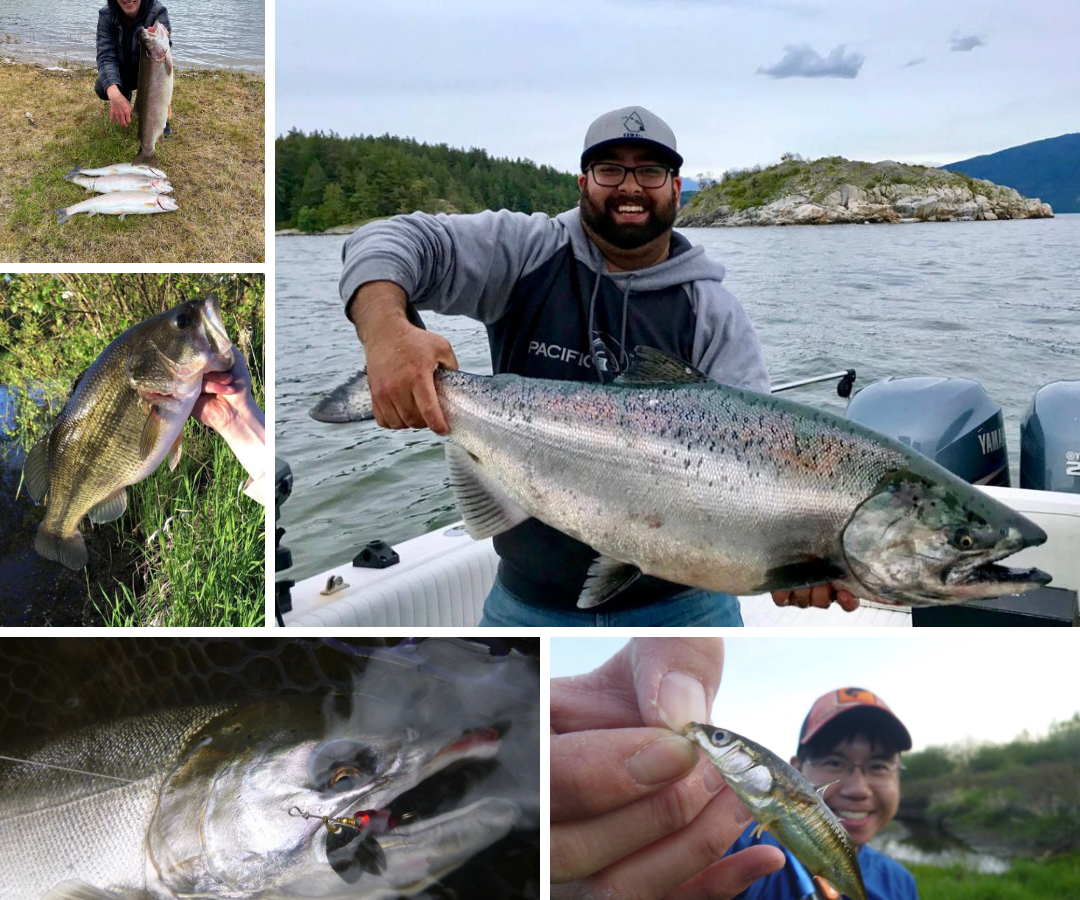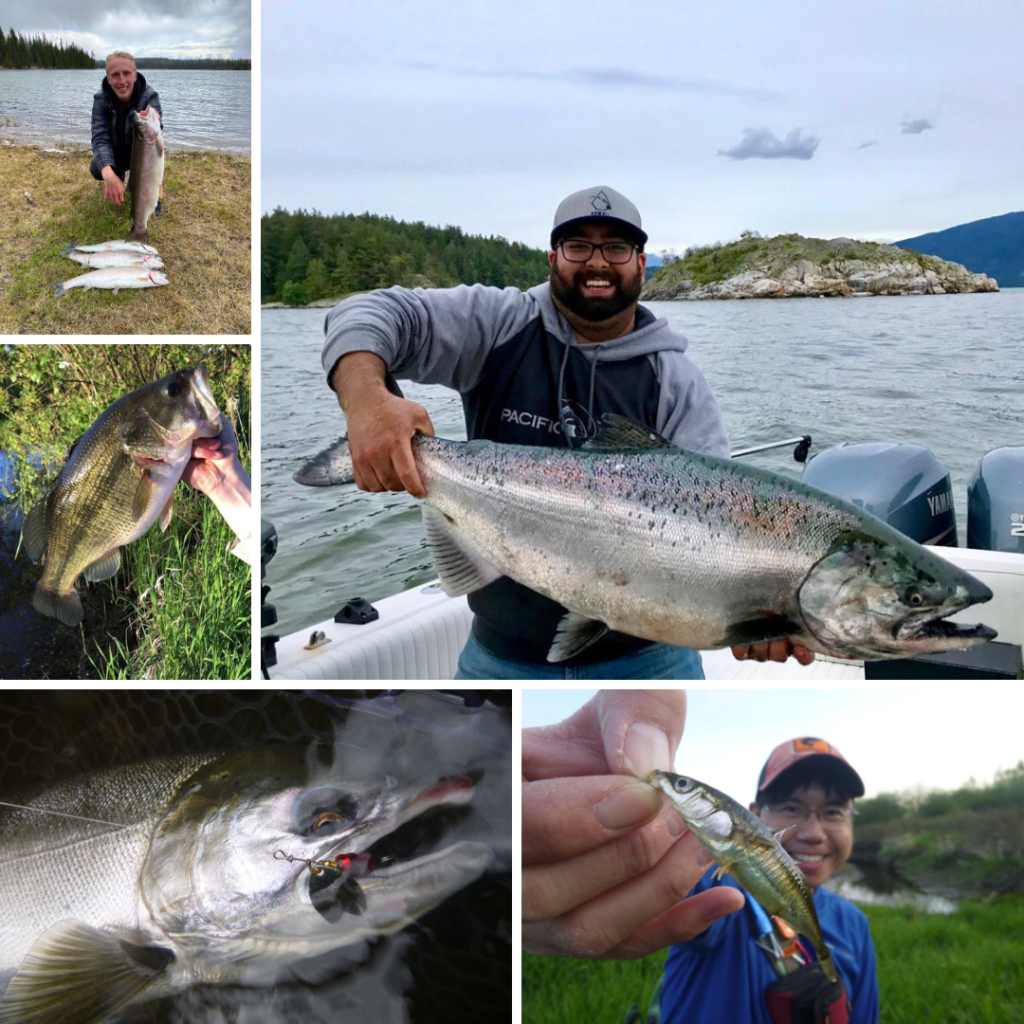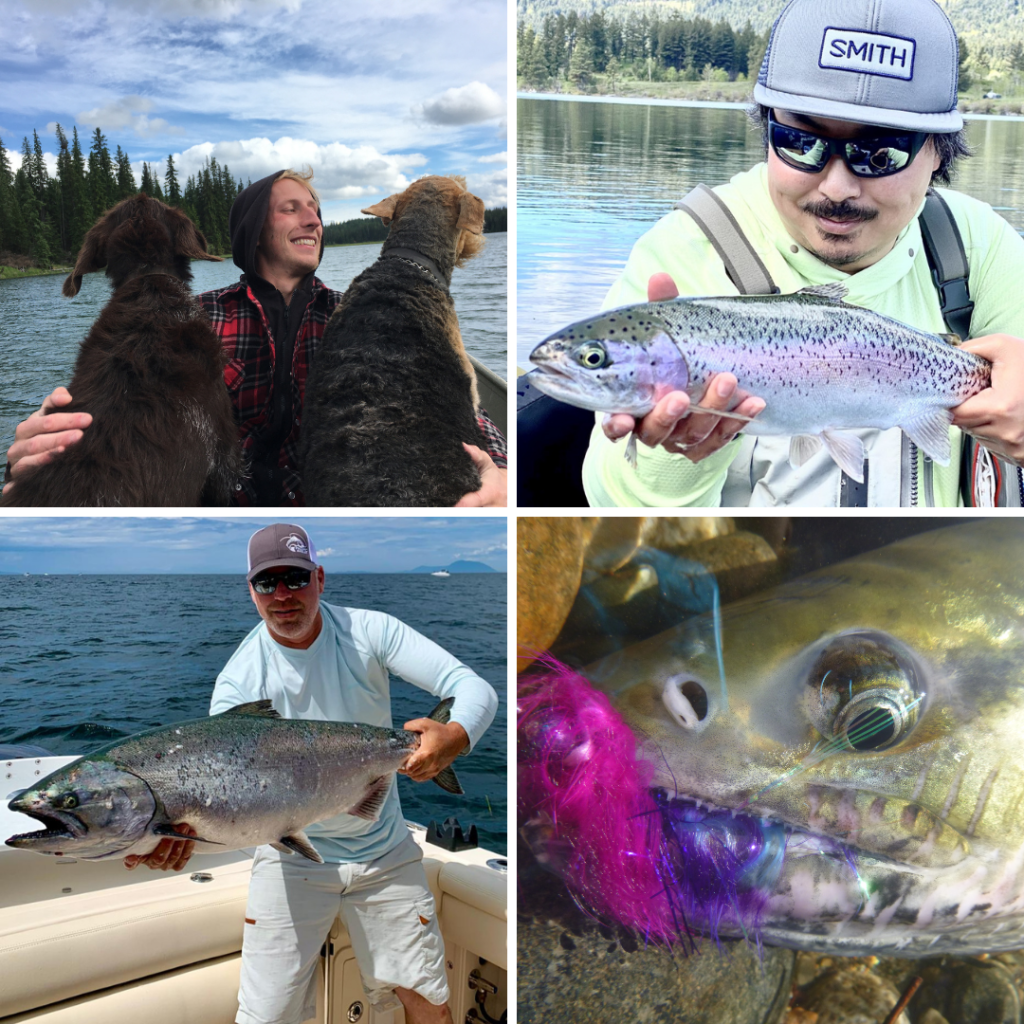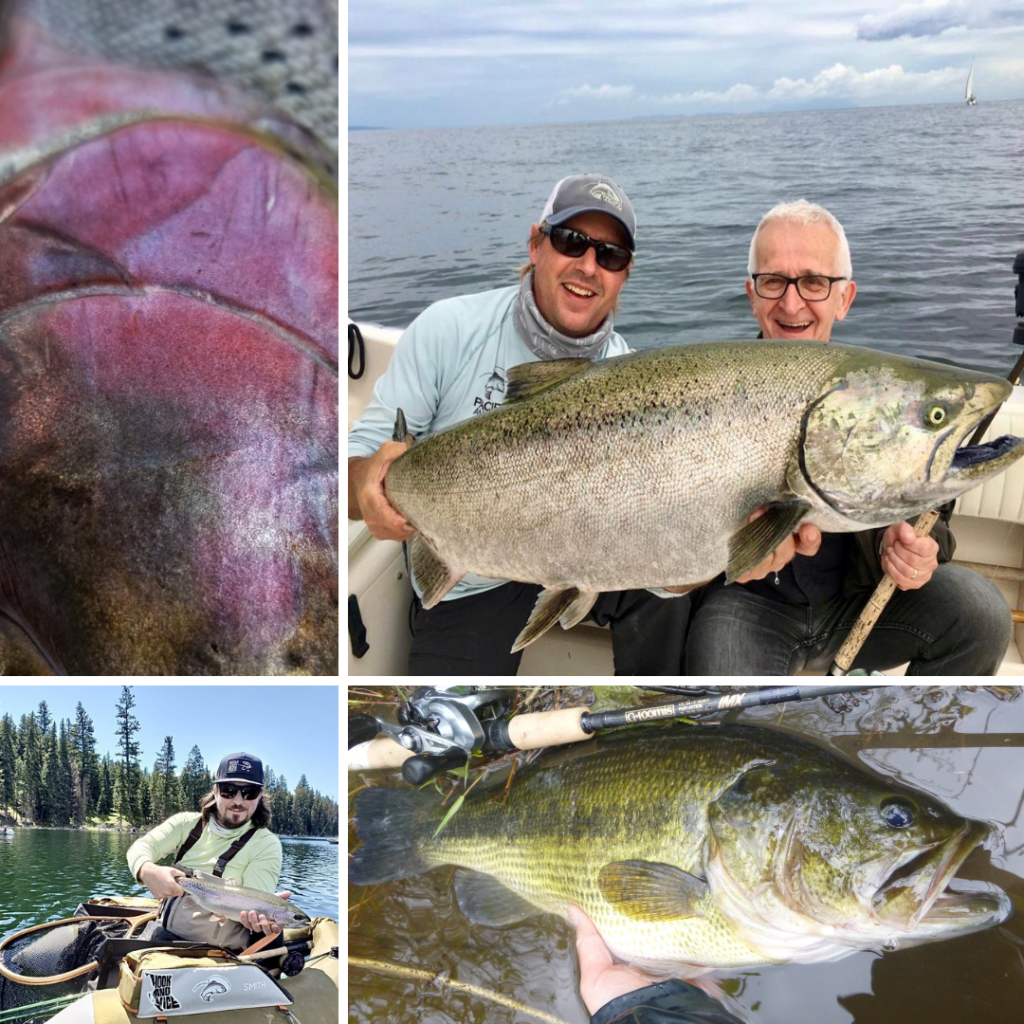OUTLOOK
Happy New Year Everyone! We hope you all had an awesome holiday. We are looking forward to a new year and wish every one of you a great 2021 and are really not sorry to say goodbye to 2020. This week we have details on the major fisheries, with updates on the Chilliwack steelhead fishing, the Squamish egg eater fishery and the Winter chinook fishery. Check out those updates below.
We also have a competition that you all can get in on! Send us your best fishing related pictures of 2020. The best photo, wins a $100 gift certificate to the store and all of the best photos will be featured in the January 29th Friday Fishing report. Check out the Video Version of the report where Matt shares a bunch of our “best” 2020 fishing photos, and has more details on the competition. Email your Photos to: info@pacificangler.ca by January 27, 2021. To get things started here are a few from our team!
Last but certainly not least check out the video version of the report!
CLASSES AND COURSES
It’s a new year and we are looking forward to getting back “into” the classroom after taking December off. We will be hosting most of our 2021 classes via zoom with select in person classes with appropriate public health order directives in place. If you haven’t signed up yet check out the full course listing here and we’ll see in the classroom this year.
FRESHWATER FISHING REPORTS
Vedder/Chilliwack River Fishing Report
It was a decent showing for the Boxing Day Derby last Saturday with four hatchery fish weighed in between 300 anglers, the biggest fish going an extremely solid 16.11lbs. There were also two other hatcheries weighed in for the Wally Hall Junior Memorial Derby that runs for most of the season, upping the total weigh-ins for the day to six. Since then there have been sporadic weigh-ins as well so it seems as though we have had a good early push of fish this year. A great start to the season for sure and we can be hopeful that it will continue to improve throughout January.
Now, we have a ton of wet weather in the forecast. Expect a lot of water fluctuations throughout the next week or so and be prepared for the conditions on the day you are out. This could be a great time to rig up a high water leaderboard, meaning beefed up leaders (I use 15lb Maxima Ultragreen) and bigger presentations like 6″ pink worms, Colorado blades, jigs tipped with prawns, and magnum gooey bobs. Also note that there are a couple of clay slides on this river that will affect visibility depending on water height, so if the visibility down low looks a little like chocolate milk then start hunting further up. Fish the soft edges and hold on tight.
Alex Au-Yeung
Squamish River Fishing Report
This past week saw the Squamish and its tributaries be finicky, with some anglers finding fish here and there. I haven’t seen or heard of any good quantities of fish being found consistently, but the quality and size has been present.
Besides the usual sculpins and spoons, egg patterns such as beads (both hard and soft) have produced as well.
This is also a great time to scout the river for when the lower water conditions arrive in the dead of winter. A lot of anglers will also use this time to practice their Spey casting as well as the river is often a little quieter and you never know if you’ll luck into any early fish or some late, fresh coho.
Keep it tight,
Jordan Simpson
SALTWATER FISHING REPORTS
Vancouver Saltwater Salmon Fishing Report
Unfortunately, if you are off Fri, Sat, Sun, it is looking like it is going to be pretty wet out there. Friday and Saturday in particular look pretty nasty with a lot of rain and wind in the forecast. Luckily the winter chinook season is a long one, so we can pick our days.
The fishing these past few weeks has been what I would call average winter chinook fishing. That means if you go out and put in a full shift, you are generally getting shots at a legal fish or two and a handful of undersize to keep you on your toes.
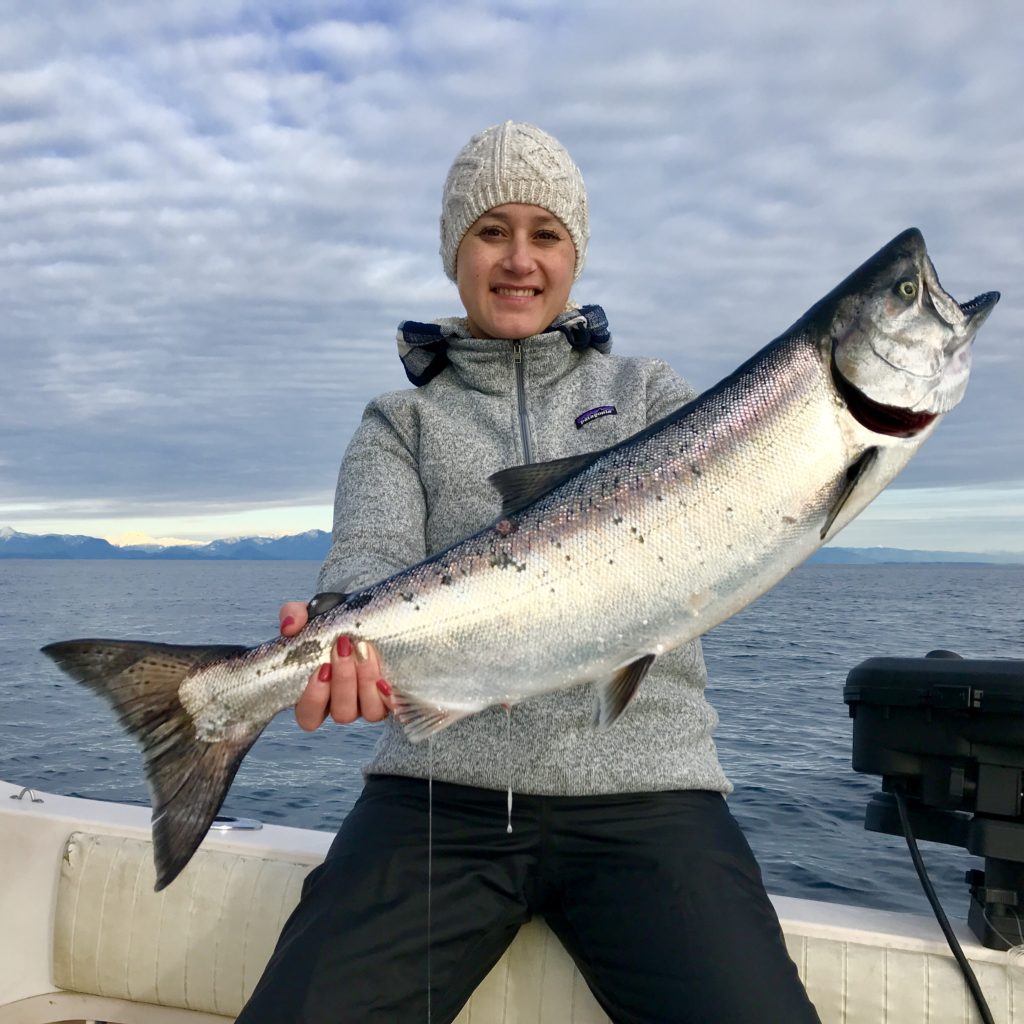
Caption: A nice winter chinook from Jan 1 a few years back!
Here are a few tips if you are going to try winter chinook fishing this year.
#1 Keep your gear close to the bottom. In the winter the water is clear, and the bait is usually very close to the bottom, so that is where you should be fishing. I tend to find most of the bait in water that is 150-250 feet deep. It will vary on the spot, but that depth of water is generally the most productive. You will see the bait balls on bottom or just off bottom, and that is where the chinook are. Of course, that is where your gear needs to be, so downriggers are critical.
#2 Got cable? Either cable or braid, make sure you have lots. In the winter I always re-spool my riggers with 400 feet of Scotty High Performance 180 LB Stainless Steel Downrigger Cable. There are some spots I fish where I routinely have 285-315 feet of cable out, sometimes more. There is nothing worse than finding out one of your riggers only has 275 feet of cable because initially it was spooled with a 300-foot spool and you (or one of your guides) lost a few feet from a mid-season repair. If one side of the boat is getting them at 315 and the other side only has 275, you are out of the game and down to 1 rod. You will fish a lot more effectively if both riggers have the same amount of cable or braid, therefore each spool is the same diameter, and you know exactly where your gear is in relation to each other. Regarding the debate between cable or braid, both work very well. I like cable because I can put release clips or dummy flashers on wherever I want. With cable they won’t slide, and I don’t need extra stops to keep them from moving. I might be stacking later on in the springtime as well, anywhere from 20 to 40 feet for a spread, and cable allows me to do this quickly.
#3 Try bigger balls. The AC/DC song Big Balls applies to winter fishing. If you want to be down in the zone and stay there during stronger tides or when trolling faster, go with some 18 or 20 pound cannonballs. It makes a big difference on the amount of blow back you get on your cable or braid. Keep the 15 pounders for the fisheries where you are in the top 100 feet of the water column like summer chinook fishing or coho fishing. The Scotty 2106 or 2116 riggers will handle 18 or 20 pound cannonballs all season long. If you have an 1106 or 1116, they were designed to be used with 15 pounders or less, so you may want to upgrade.
#4 Troll fast and cover water. Winter chinook are aggressively feeding fish. They are generally eager biters, but you have to find them. As a result, it is better to troll on the faster side of the speed spectrum so you can cover more water throughout the day. If I am using an 18 pound cannonball and fishing 200 feet, my cable angle is usually at least 45 degrees if not 50 or more. If you are routinely hooking bottom fish like cod and flounder, you can definitely go faster.
#5 Fish spoons and hootchies. In my opinion artificials, like spoons and hootchies out fish bait in the winter. You have a variety of very productive UV and glow finishes to choose from these days that just plain work like a hot dam when they are down there 150-250 feet. Spoons and hootchies also fish better at faster trolling speeds that are common when winter fishing. They are also more durable, so when you get a strike that doesn’t connect, you can keep fishing. With bait, you will need to check it when this happens. Finally, when you do get in a bit too tight and that sonar screen is climbing fast, you can hit the throttle hard, accelerate, lift up your gear and re-position, then slow down and keep on fishing. Bait will almost always “blow out” when you do this, so you have to bring it up and check it. With spoons and hootchies you know your gear is still working. Properly presented spoons and hootchies with some gel scent will catch you a lot of fish, so give them a try.
#6 Use braid on your reels. When you are fishing deep, it can be tough to pop that clip when your reel is spooled up with monofilament. It can also be difficult to detect the subtle bites from a grilse or a flounder. Try spooling your reels with 65 LB pound braid and then put on a mono top shot. On my Abel moochers I first put on 200 yards of 30 LB fly line backing to build up the arbor, then 300 yards of 65 LB braid, then a 40 foot mono top shot using a double uni knot. I like 65 LB Power Pro Super 8 Slick V2 for the braid and for the mono I like 40 LB Berkley ProSpec. This setup cuts through the water well and has a lot less stretch. This means you will see subtle bites so you aren’t dragging coarse fish around, you can get it out of the clip much easier, and you will have better hooks sets. The braid also lasts a long time and after a full season you can flip it and use it another season. Once you try this setup for deep water trolling, you will never go back to a pure mono setup. One last thing, don’t stress out about that double uni knot, it hasn’t failed on me ever, even when I have been sealed numerous times and pointed the rod at the seal. The hooks have either bent out or the leader has snapped, but that knot has never failed under an extreme amount of weight.
#7 Use your electronics. With today’s electronics you can literally tell if there are fish and bait in the area. In the winter we are using high CHIRP sonar with a wide cone (25 degrees) so after a few passes in a spot you can see if there are bait balls and chinook arcs present. If you spend an hour or more in a spot and you don’t see any bait or any arcs, time to make a decision. Wait for the bait and fish to show up on the tide (fingers crossed) or move and find some bait and some fish. Equally important is when you do find bait and fish you can adjust your tack. Some of the places we fish are fairly long, so if we see bait and fish we can really focus on that area and stay out of the areas that have no life. Good electronics are key to making those productive decisions that end up giving you consistent winter success.
#8 Just go. Don’t wait for the hot report. Winter chinook move around a lot. The best thing to do is just go when your schedule and the weather allows.
See you out there this winter,
Jason Tonelli


